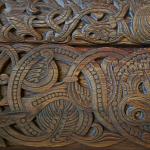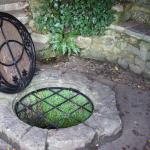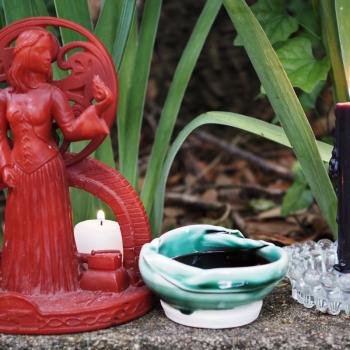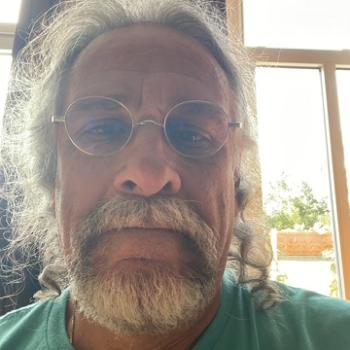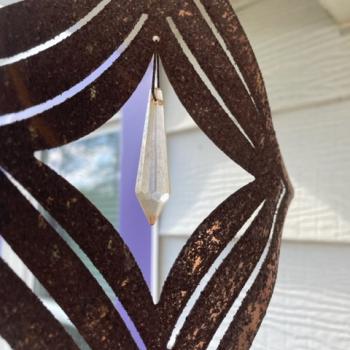First Gods
Which gods to call and in what order to call them is often a question we face when reconstructing our rites.
The best way to reconstruct the structure of rites around invoking the highest gods, is to use the Tripartition Hypothesis.
If we don’t have the knowledge of how the gods were invoked and in what order, we look to survivals in cultures in the same language family as ours.
For us this information is contained within Vedism, as the third of the four vedas were about the pagan Liturgy of that branch of Indo-Europeans. We have sufficiently demonstrated in previous articles how interconnected the Indo-European paganism are, and so what we create needs to look like or similar to this. If we had more than just this one example, we could triangulate for ourselves more wiggle room. However, we only have this one example.
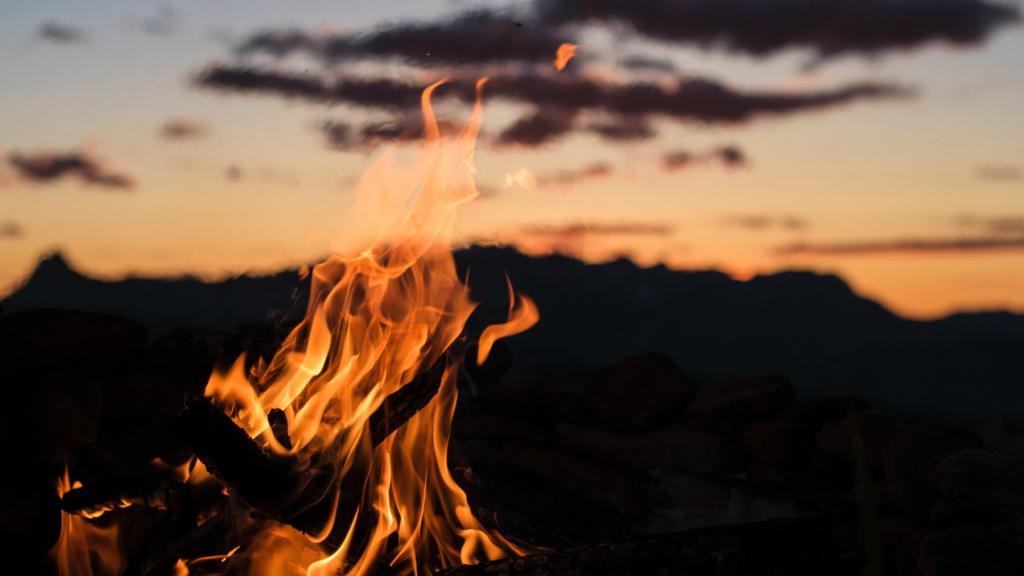
Dumezil points out that that in Vedic rites, Vāyu was usually invoked at the beginning of a ritual, prior to the invocation of Mitra and Varuna, and that Agni was invoked subsequent to the invocations of the Asvins. These then are what the terms dieux premiers and dieux derniers, or beings who are mentioned prior to and or subsequent to the gods of the three functions.
These are also gods of beginnings and endings. Agni and Vāyu serve as these gods in Indic faiths. Reconstructionists use Morrigan(Kondratiev) while others might use Bríd, like I do. Dumezil called these “dieux derniers” and “dieux premiers” or First Gods and Last Gods. They introduce the trifunctional gods and terminate them. If we were to look at one of the earliest and most preserved Indo-European religions, the summoning list looks like this:
- Vāyu – First God
- Mitra – Judicio-sovereign
- Varuna – Magico-sovereign
- Indra – Champion & Hero
- Asvins/Sarasvati – Horsemen Earth Gods
- Agni – God to deliver the sacrifice.
While Agni is often said to call the other gods forth, he is still called last. We can only speculate as to why this is, but good speculation might lead you to the conclusion to decipher the function of the ritual. For instance, it may be that energetically and spiritually, Agni doesn’t deliver any of the Invocations until you’re done and you’ve done them correctly. Vedic, Greek, and Roman rituals are all strict and done over if done wrong. It’s no hard matter to use that thinking to your benefit in this. We’re not aiming to be exact, we’re aiming to be as exact today as today’s scholarship allows us to be, and in whatever unknowns are remaining, we find our freedom to create seasonal and regional variance and difference.
But the order in the myth is often reversed where the third function is first, and such a list would look like this in a more archaic form (Littleton 219):
- Vāyu – Champion of the Gods
- Asvins/Sarasvati – Horsemen Gods/Earth Gods
- Indra – Champion & Hero
- Mitra – Judicio-sovereign
- Varuna – Magico-sovereign
- Agni – God to deliver the sacrifice.
I prefer this order much more simply because where ritual is concerned, I like to create climax and buildup.
The invocation lists are the order in which things are called or invited. Honoring occurs later when the songs are sung as offerings. So the last god is a sacrifice modulator-demodulator. The gatekeeper an otherworld modem.
So what is the Dieux Premer’s Purpose? Vāyu is a god of wind in Vedic lore, while Vāyu Vata is a god of wind and atmosphere in Avestan lore of the Indo-Iranians. Is it simply that the champion of the Gods enters a space first? I think so.
In my case, we use Oghma as our First God, while not a god of wind particularly, he’s a champion of the gods like Vāyu is and he is a master of the wind via an association with poetry and trees. And his intellect is greater than his strength, which is that of a champion.
So a celtic invocation list for the highest of community ritual might look something like:
- Ogma – Champion of the Tuatha Dé
- Airmed & Miach/Fír and Fial(Macha Fairywoman’s Children)/Boannd/River Goddess
- Lugh – Champion & Hero
- Nuada – Judicio-Sovereign
- Dagda – Magico-sovereign
- Brid/Manannan – Last God, God to deliver the Sacrifice
Another example for the Morrigan Devotees:
- Ogma – Champion of the Tuatha Dé
- Airmed & Miach/Fír and Fial(Macha Fairywoman’s Children)/Boannd/River Goddess
- Macha – Champion & Hero
- Anand/Anu – Judicio-Sovereign
- Badb – Magico-sovereign
- Brid/Manannan – Last God, God to deliver the Sacrifice
See you really can use this as a template which you can test and see if it feels right, if it has enough entropic difference to not feel bland or contrived.
With regard to Oghma, Heimdallr, Janus, and Vayu, they’re first functional champions who do third functional work. Vayu as a the wind, Janus as concerned with Quirinius, and Heimdallr is described the “whitest of gods” linking him to Vayu’s white banner and the first function. But Heimdallr pan functionality comes from his establishment of the classes, his sons being Thrall, Karl, and Jarl. He is called hvítastr ása meaning ‘the whitest of gods’.
This means we need to look for a non-functional or pan-functional god who is a champion of the gods as our first god called, that is, to match the patterns emerging from this data from Indo-European myth.
Last Gods, Gatekeepers and Psychopomps
In Indo-European fire lore, there are remnants that speak to a deeper fire religion that is lost to us. One of Dagda’s names is Aed meaning ‘Fire‘, and dagda(दग्ध) in sanskrit means ‘burnt’ or ‘to burn’ or ‘consumed by fire’. These terms are unrelated but stem from a similar set of roots. We call Bríghid as the Fire Tender to dwell within the fire as we in our mysticism, do her work of tending our fire to get close to her divinity. This Fire -> Fire Tender relationship isn’t simply a reconstruction based on names and Brighid’s relation to both fire and Dagda. In Vesta, Hestia, and Agni’s priests in Homa (होम) rites. In Celtic and specifically Irish Paganism the tender role remained in Brighid’s mystic nuns but was buried. In Iron Age life under wet conditions, keeping and tending a fire was of the utmost importance. Perkun(as) or Perun was the Polish Thunderer or Striker. Perkun had a vestal fire which was maintained by maidens who died if the fire went out(Puhvel 224).
You can use any psychopomp, however, I recommend a fire god for general ‘Fire’ festival rites. If you live on an Isle or are Manx, Mananann will be an obvious choice. If you are working with ancestors, the Lord of the Dead such as Donn will work. If you are working with beings from Inis na mban, the Isle of Women, use the prominent psychopomp from that Imram.
I hope this helps to give you an idea beyond any henotheistic framework you’re now caught in. I know I was caught in a patron trap with my rites. It felt wrong just to cycle through your patron gods and be done with it. Here I can start my invocations with this order, then open the gates or ways or mists to the Otherworld with the Last God as my gatekeeper. I can then call upon my ancestors, patron and make my personal offerings to them. In this way I can honor the kingdom of the gods which has brought order to cosmos and arranged the middle world, saving for last the closest gods to me.
A Hellenistic Example
- Apollo – Champion of the Tuatha Dé
- Demeter – Earth Goddess
- Ares – Champion & Hero (Ares is less of an IE hero… influenced by regional factors he became an asshole like late Indra.)
- Zeus – Judicio-Magico-sovereign with 2nd functional tendencies (Combined Judicio-Magical / Mtra-Varuna/ Nuada-Dagda)
- Hermes – Last God, God to deliver the Sacrifice, God of Roads
Some folks shoot toward invoking out to all of the olympians in the inscriptions from Mycenae: Di-we(Zues) era(Hera) Posedaone, Emaa(Hermes), Arei(Ares), Da-mater(Demeter/Earth Mother) so on and so forth(Puhvel 129), however the list I provide above is a basic tripartion list, and would likely be closer to the earlier proto-Hellenistic rites of Anatolia. So it isn’t going to work for everyone, but it is a starting point and a conversation starter.
A Germanic Example
- Bragi Bodasson – Guards the Hall of the Gods
- Freyr/Freya/Árvakr and Alsviðr – Earth Gods/Horsemen Gods
- Thor/Thunar – Champion & Hero
- Tyr/Tiw– Judicio-sovereign
- Odin/Wodan – Magico-sovereign
- Heimdall – God to deliver the sacrifice.
In this example, I use Bragi a poet, side stepping off of my Oghma association. Thor is the real champion of the Germanic gods and I’ll update my list if I find a prior to Thor old-man champion. While Heimdallr can easily be used as a First God with his associations with white and his fathering mankind, however, as the final guardian of the rainbow bridge, seen in the misty firelight when the ice turns into celestial waters and rains down upon our rites. I’ve seen it first hand.
The use of Freyr was the third part of the triad mentioned above from Uppsala with Thor in the center and Oðinn and Freyr on either side. This is the triad that was replaced by Father, Son, Holy Ghost(Puhvel 205). Because of this triad, Freyr is recommended although my list above allows for the more prominence of the female and horse deities.
This is a subject I continually mull over and try to put into practice. I’ve tested it out in group rites a few times and finally feel like I have a precedence and basis for what I’m doing.
Sources
Read more at http://www.patheos.com/blogs/fromacommonwell/2017/11/cup-axe-plow-hidden-ideology-european-paganism/#ukaFIivlXVgA1emV.99


